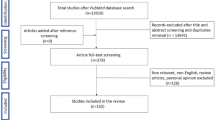Abstract
We present a case of a nematode larva infection found in a cutaneous nodule excised from the left flank of a 48-year-old Chinese male, who was naturalized in Japan and comes and goes frequently to China and Japan. Clinical diagnosis at his first visit to a local hospital was epidermoid cyst. Pathological diagnosis of surgical specimen was cutaneous larva migrans and detailed morphological observation suggested that the worm in the subcutis was a dioctophimatid larva. DNA sequence analysis of the formalin-fixed and paraffin-embedded tissues revealed the larva as the giant kidney worm, Dioctophyme renale (Goeze, 1972).

Similar content being viewed by others
References
Anderson RC. Nematode parasites of vertebrates. Their development and transmission. Wallingford: CABI Publishing; 2000.
Chauhan S, Kaval S, Tewari S. Dioctophymiasis: a rare case report. J Clin Diagn Res. 2016;10:DD01–2.
Yang F, Zhang W, Gong B, Yao L, Liu A, Ling H. A human case of Dioctophyma renale (giant kidney worm) accompanied by renal cancer and a retrospective study of dioctophymiasis. Parasite. 2019;26:22.
Tokiwa T, Ueda W, Takatsuka S, Okawa K, Onodera M, Ohta N, et al. The first genetically confirmed case of Dioctophyme renale (Nematoda: Dioctophymatida) in a patient with a subcutaneous nodule. Parasitol Int. 2014;63:143–7.
Urano Z, Hasegawa H, Katsumata T, Toriyama K, Aoki Y. Dioctophymatid nematode larva found from human skin with creeping eruption. J Parasitol. 2001;87:462–5.
Tokiwa T, Harunari T, Tanikawa T, Akao N, Ohta N. Dioctophyme renale (Nematoda: Dioctophymatoidea) in the abdominal cavity of Rattus norvegicus in Japan. Parasitol Int. 2011;60:324–6.
Beaver PC, Theis JH. Diocytophymatid larval nematode in a subcutaneous nodule from man in California. Am J Trop Med Hyg. 1979;28:206–12.
Gutierrez Y, Cohen M, Machicao CN. Dioctophyme larva in the subcutaneous tissues of a woman in Ohio. Am J Surg Pathol. 1989;13:800–2.
Centers for Disease Control and Prevention. DPDx-Laboratory Identification of parasitic diseases of public health concern: Dioctophymiasis [Dioctophyme renale]. https://www.cdc.gov/dpdx/dioctophymiasis/. Accessed 25 July 2019
Hallberg CW. Dioctophyma renale (Goeze, 1782) a study of the migration routes to the kidneys of mammals and resultant pathology. Trans Am Microsc Soc. 1953;72:351–63.
Li G, Liu C, Li F, Zhou M, Liu X, Niu Y. Fatal bilateral dioctophymatosis. J Parasitol. 2010;96:1152–4.
Banzai A, Tanikawa T, Kimura G, Sasaki T, Kawakami Y. Parasitic helminths collected from the brown rat, Rattus nrovegicus, in Chuo Wrad, Tokyo, Japan (in Japanese). Med Entomol Zool. 2018;69:171–6.
Author information
Authors and Affiliations
Contributions
Removal of the cutaneous tumor: Naoki Shirai.
Pathological diagnosis: Takuji Tanaka, Yuki Mizuno, and Hiroyuki Kanoh.
Morphological diagnosis of the parasite in the formalin-fixed paraffin-embedded specimen: Hideo Hasegawa, Haruhiko Maruyama, and Teruki Kadosaka.
Genetic analysis of the parasite in the formalin-fixed paraffin-embedded specimen: Toshihiro Tokiwa.
Serum assay (dot-ELISA): Makoto Itoh and Fumiaki Nagaoka.
Writing—original draft: Takuji Tanaka.
Writing—review and editing: Hideo Hasegawa, Toshihiro Tokiwa, and Teruki Kadosaka.
All authors have read and agreed with the final version of the manuscript.
Corresponding author
Ethics declarations
Conflict of Interest
The authors declare that they have no conflict of interests.
Ethical Approval
All procedures were in accordance with the Helsinki Declaration (World Medical Association Declaration of Helsinki: ethical principles for medical research involving human subjects). JAMA. 2013; 310: 2191-4.
Patient Consent
Full written informed consent was given by the patient prior to examination.
Additional information
Publisher’s Note
Springer Nature remains neutral with regard to jurisdictional claims in published maps and institutional affiliations.
This article is part of the Topical Collection on Medicine
Rights and permissions
About this article
Cite this article
Tanaka, T., Tokiwa, T., Hasegawa, H. et al. Morphologically and Genetically Diagnosed Dermal Dioctophyme Larva in a Chinese Man: Case Report. SN Compr. Clin. Med. 2, 468–471 (2020). https://doi.org/10.1007/s42399-020-00256-6
Accepted:
Published:
Issue Date:
DOI: https://doi.org/10.1007/s42399-020-00256-6




